Strive to Reduce Slurry Erosion and Cavitation in Pumps Through Flow Modifications, Design Optimization and Some Other Techniques: Long Term Impact on Process Industry
- PMID: 33494535
- PMCID: PMC7865773
- DOI: 10.3390/ma14030521
Strive to Reduce Slurry Erosion and Cavitation in Pumps Through Flow Modifications, Design Optimization and Some Other Techniques: Long Term Impact on Process Industry
Abstract
Centrifugal pumps are being widely used in various industries for moving fluids that carry solids through pipelines where the need of head and flow rate is not high. Slurry erosion and cavitation are an extremely complex and not yet fully understood phenomenon that occur in centrifugal pumps; however, these undesirable phenomena can be reduced to a certain extent. Appropriate design and development of experiments is required to reasonably predict slurry erosion and cavitation. However, CFD methodology complements analytical solutions and experiments whenever testing of equipment has limitations. The current paper highlights the various slurry erosion and cavitation reduction techniques utilized by different researchers. Economic analysis conducted for a case study relevant to centrifugal pump (CP) usage in Pakistan shows that an 8% enhancement in pump efficiency can reduce the life cycle cost to about 17.6%, which could save up to USD 4281 for a single pump annually in Pakistan.
Keywords: CFD; cavitation; centrifugal pump; erosion; process industry.
Conflict of interest statement
The authors declare no conflict of interest.
Figures



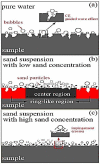

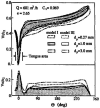
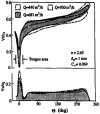


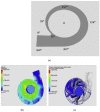






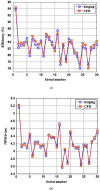





References
-
- Xiao Y., Guo B., Ahn S.H., Luo Y., Wang Z., Shi G., Li Y. Slurry Flow and Erosion Prediction in a Centrifugal Pump after Long-Term Operation. Energies. 2019;12:1523. doi: 10.3390/en12081523. - DOI
-
- Shah S.R., Jain S.V., Patel R.N., Lakhera V.J. CFD for centrifugal pumps: A review of the state-of-the-art. Procedia Eng. 2013;51:715–720. doi: 10.1016/j.proeng.2013.01.102. - DOI
-
- Wilson G. The Effects of Slurries on Centrifugal Pump Performance. Fourth Int. Pump User Symp. 1987:19–26. doi: 10.1061/(ASCE)ME.1943-5479.0000319. - DOI
-
- Pagalthivarthi K.V., Ravi M.R., Gupta P.K., Tyagi V. CFD Prediction of Erosion Wear in Centrifugal Slurry Pumps for Dilute Slurry Flows. J. Comput. Multiph. Flows. 2011;3:225–245. doi: 10.1260/1757-482X.3.4.225. - DOI
-
- Huang S., Su X., Qiu G. Transient numerical simulation for solid-liquid flow in a centrifugal pump by DEM-CFD coupling. Eng. Appl. Comput. Fluid Mech. 2015;9:411–418. doi: 10.1080/19942060.2015.1048619. - DOI
Publication types
LinkOut - more resources
Full Text Sources
Other Literature Sources
Miscellaneous

